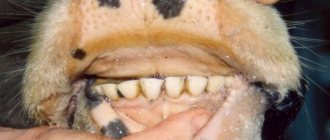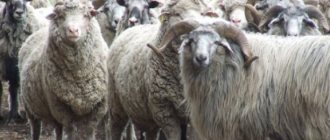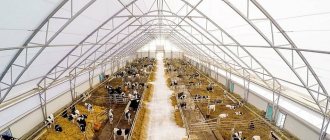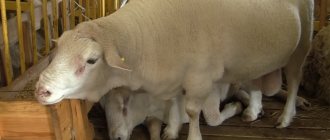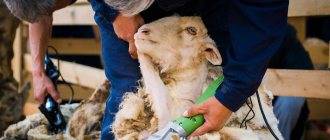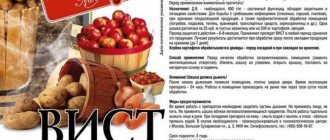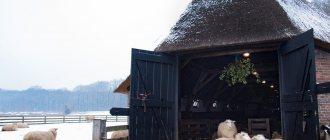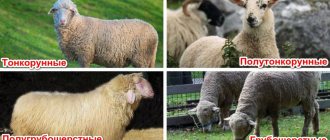With the onset of cold weather, sheep spend more time in sheepfolds, and for their comfortable keeping, feeders and drinking bowls are installed indoors. They are necessary to maintain cleanliness and order, proper organization of feeding, and economical distribution of food. Devices for dispensing feed are usually purchased at a specialized store, but you can also make a sheep feeder for hay with your own hands. It is enough to purchase the necessary consumables, use ready-made drawings, and study photos of sheep feeders.
Purpose of feeders
Sheep, like many other animals, require a certain amount of attention and care from humans. To ensure high-quality nutrition, it is important to timely place feeders in the pen that are special in design and purpose. The same requirements apply to drinking bowls and feeding crèches. When designed and manufactured correctly, the most comfortable feeding conditions are created for sheep.
The profitability of farming activities related to sheep breeding is ensured only if there is access to pastures for grazing animals with abundant succulent vegetation. Indeed, during the summer, the basis of the herd’s diet will be the forbs in the meadows. But with the approach of cold weather, the animals are gradually transferred to premises to be kept there until the onset of spring warmth. During confinement, it is impossible to provide an abundance of fresh vegetation, and therefore it is necessary to give the flock food prepared in advance.
The basis of winter nutrition is hay with root crops, grain crops and silage. Some farmers take the easy route and leave the feed directly on the floor of the pen. However, in this case, the proper level of comfort and safety of the herd will not be ensured, since the premises will quickly become dirty with the risk of developing diseases. Using feeders is much more effective. In addition, this method has a number of advantages:
- due to the fact that animals will not spill food on the floor and scatter it around the barn, more economical consumption of food is ensured;
- no particles of manure or dirt get into the food, and therefore it remains clean and safe for animals, which ensures a certain prevention of diseases;
- the absence of food elements on the floor of the sheepfold creates the best conditions for keeping animals and their comfort;
- When using feeders that are permanently installed in the room, animals adapt to the feeding process and get used to eating in only one place.
A high-quality feeder can be specially ordered from the workshop. However, making it yourself will not be difficult. Such designs require the possibility of using a wide variety of materials and a minimum of tools. Having spent time making these devices with his own hands, the farmer will receive undeniable benefits when keeping animals in a pen or stall.
Winter care recommendations
If a farmer does not follow the required regime when caring for sheep in the winter, they are in a stressful state. They already find monotony difficult, as well as changing their nutritional diet. For this reason, the farmer must organize a proper daily routine for the animals. Otherwise, pets may lose their appetite and later become completely ill.
This advice is especially important to heed for farmers who keep flocks of ewes and pregnant sheep. The stress caused can negatively affect their well-being and lead to miscarriage or decreased milk production.
Experienced sheep farmers share useful tips with farmers who have just started raising livestock:
- it is necessary to systematically invite a veterinarian to inspect the livestock to prevent dangerous diseases;
- individuals with weakened immune systems must be urgently separated from the general herd and treated in a timely manner;
- once every six weeks it is necessary to clean the animals’ hooves;
- vaccinate sheep in a timely manner, following a certain schedule;
- ensure that food is stored in the right place with normal ventilation, to prevent the appearance of harmful rodents in these places;
- feed should be poured in such a way that the sheep cannot approach the feeder;
- Animals should approach the watering hole in small numbers, so that there is at least 25 cm of trough length per sheep;
- It is recommended to have heated drinking bowls on the farm; if they are not available, the animals are given water from a well.
The farmer has the right to transfer animals to stabling only after suitable preparation. First of all, he must take care of the preparation of necessary and high-quality feed, as well as their preservation throughout the winter. In addition, sheep must be kept in a specially equipped room with insulation and ventilation conditions.
To move into a stall, animals must undergo veterinary preventive measures. Proper care and feeding of sheep during the winter period ensures that the animal receives a sufficient amount of meat and wool.
Main types of feeders
A variety of designs are used to feed sheep. In this case, the criteria that are relevant in a particular situation are taken into account:
- based on the type of feed;
- depending on the type of food;
- taking into account the number of individuals in the herd;
- according to the features of structure and use - the ability to disassemble, comfort during cleaning and filling, etc.
When choosing the most suitable option, the farmer should focus not on one criterion, but on several. For example, according to the method of placement, structures can be of three types:
- Stationary, which are installed in a strictly defined area in the barn or on the walking area. They are firmly fixed to the base.
- Portable, which are used for feeding the herd when grazing on remote pastures. They are convenient because when grazing, sheep are often driven from one area to another, and therefore the feeders can be easily removed and moved after the animals. In addition, this design makes the cleaning process easier.
- Universal, suggesting a combination of characteristics of both designs. These feeders can be firmly fixed to the floor or ground of the pasture, but when the herd moves to another area, they can be removed and moved to a new pasture or pen.
Feeders are used to supply different types of feed to sheep. Therefore, their design and manufacturing method will differ. There are two main options:
- hay feeding manger;
- feeder containers designed for grain-type feed and root crops.
Arrangement of the stall
When the time has come to set up a stall, you must immediately provide for the presence of several types of feeders and allocate a place for their most rational placement. Let's look at the features of feed containers.
For wet food, you should purchase a special plastic model. They are sold in a form completely ready for use. There are economy options, the cost of which is in the range of 1-3 thousand rubles.
For a large farm, more functional, spacious models are chosen. Their price can reach 25 thousand. At the same time, they are durable, environmentally friendly, durable and comfortable.
Note! Wet food containers will need to be emptied regularly to maintain cleanliness and sanitary conditions. Therefore, consider in advance how comfortable it will be for you to remove and then attach the model again.
Dry food is most often placed in rectangular containers. It is preferable to choose mounted options.
The front grill will help you maintain order, because the hay and grass will not constantly fall apart. Be sure to ensure that the cows stick their heads through without difficulty and do not get stuck in the fence.
Features of a manger for hay and straw
This type of feeder has a lattice design with a bottom and walls. Nurseries are used mainly for feeding animals with hay or straw. But using dry food in this case is completely inconvenient, since the holes in the structure are quite large. No special effort is required to add hay - it is simply placed on top. But there will be animals eating through large gaps between the individual transverse bars of the lattice.
Usually a nursery is set up in two ways:
- suspended, when the nursery is attached to a structural element of the room;
- placement on vertical racks, which are made of bars.
Due to its ease of use, the nursery is actively used by farmers. However, they also have a drawback - while eating, the sheep begin to pull hay from the spaces between the slats and scatter it across the floor surface.
One of the advantages of nurseries is that they can be made from a wide variety of materials, although it is advisable to make the bottom from wood to prevent injury to animals. Depending on the modifications, the following options are possible:
- Floor-type nursery. It is very convenient to put hay in them, since the height above the floor is not too high. However, sheep can easily get deep into them and start throwing the contents around. In addition, lambs often face a shortage of roughage - adult lambs have access to hay intended for young animals.
- Hanging nurseries allow you to create a multi-level structure for placing food - for lambs it will be laid lower using a grid with narrower spaces between the slats. In such a design, usually a bunker, the volume is relatively smaller, and the loading process is more complex.
- A design with a tray into which spilled hay will fall. This is a more convenient option for caring for animals, but it will be more difficult for the sheep themselves to eat.
- The combined option is quite simple to make. However, in such a feeder, different types of food will be used, which will begin to mix.
- “Slow” type feeder. Sheep will not be able to throw away hay from such nurseries; feed is provided once a day. When eating, sheep have a natural head position. True, animals often jump into the structure from above and spoil the food.
- Mesh design – reptukh. This is a compact option that can be hung anywhere in the room. You can make a feeder yourself, choosing the optimal cell size when weaving, so that hay loss is minimal. However, if the cells are too large, the animal runs the risk of getting entangled in them. This is not a very durable option, and therefore you will have to periodically check the weaving ropes for integrity.
Types of sheepdogs
How to build a sheepfold with your own hands
There are several types of sheepfolds depending on the climatic conditions in a particular area, the purpose of the herd and the number of heads in the herd.
- Koshara is a place for sheep. There are no partitions inside it. Sheep are in a single herd. Most often, sheepfolds are used in the southern regions as an alternative to the classic sheepfold. All utility rooms in this case are located in separate adjacent buildings.
- Northern sheepfold - under one roof there are 1 or 2 compartments for housing sheep and young animals. Warm, heated room for newborn lambs. Almost always, sheepfolds of this type are provided with entrance vestibules so that cold air from the street does not penetrate into the room where the animals are kept.
- Breeding sheepfolds have separate premises for ewes, rams and young animals. There is a heated maternity ward and a ward for weak and sick sheep.
Grain and silage feeders
The feeder, which is designed to accommodate silage, as well as crushed root crops and grain feed, has a different design. Wide boards or timber made of wood are most suitable for its manufacture.
Typically, feeders are made in the form of a long, wide trough, the longitudinal walls of which are inclined. This structure makes it easier for sheep to reach the remaining feed. If the herd is large in number, then the trough should be made wider, and in the middle part along the structure it is advisable to nail a long board as a separator. Thanks to the last element, animals can take food from both sides.
When choosing this design, you should remember its instability. Therefore, there is a risk that sheep that are too active may overturn the feeder. To eliminate this situation, it is advisable to attach legs to the trough. If a permanent installation is intended, it is advisable to make the legs long and partially dig them into the ground.
To feed sheep, combination feeders or structures designed for a specific feed - a concentrated or juicy variety - can be used. The material used is one that matches the farmer’s capabilities:
- Combined wooden containers are easy to make and multifunctional. They are great for mixing different types of food.
- Brick structures are coated with cement; they create a barrier for rodents or water to penetrate inside. True, difficulties arise when caring for them - it will not be possible to clean them completely.
- A hanging structure made of plastic or a rubber basin is hygienic and easy to clean. Therefore, they are suitable for both concentrated and succulent feed. The disadvantage is the possibility of one individual eating at the same time.
Experts say that concentrates and succulent feed should not be mixed. At the same time, for hygiene reasons, feeders are washed after each meal.
Tray
Suitable for liquid feed. In addition, it is very convenient to wash. If the poultry yard is large, then several dozen ducklings or adults can be fed at a time.
Thanks to its shape, the tray feeder is easy to use, easy to clean from dirt and food residues, as well as disinfection
To make a tray feeder with your own hands, you need to prepare:
- two board;
- pencil;
- roulette;
- hacksaw or other saw;
- drill and screws or hammer and nails.
The optimal width of the feeder for ducks is 15 cm. This is necessary so that when ducks approach from both sides, they do not take food from each other.
The height of the side is approximately 8 cm. If the breed is large, it can be increased. For chicks, you need smaller sides so that they can reach food, but cannot climb inside.
To prevent ducks from trampling on grain or liquid food, you can nail a 3-centimeter strip in the middle, along the entire length.
Frequently used material
To feed adult animals, feeders made of wood material - beams, boards, plywood - are used. This material is available, not too expensive, and making a container with your own hands is quite simple. However, with all the advantages of such designs, there are also serious disadvantages:
- when using wooden feeders made from poorly dried elements in high humidity conditions, cracking and damage to the entire structure are likely;
- it is impossible to treat boards with paint or other paints and varnishes, since animals often chew boards and can be poisoned by toxic substances;
- It is not recommended to take blanks from spruce or pine when making them, since sheep react negatively to the aroma of resin and essential oil.
Metal feeders and drinkers have a longer service life. The design itself is more durable. However, the cost of the product is higher, although during production you can use objects that are on the farm - barrels, fence sections, mesh. In this case, the cost of the structure is reduced. At the same time, there are obvious disadvantages of this option:
- despite great durability, metal elements begin to rust over time;
- the weight of the entire structure will be much greater compared to a wooden product.
Important!" If you want to save money on making a feeder, you can use an unnecessary playpen. It is usually made of plastic or wood. This design is quite convenient for animals.
There are also more expensive options - making a stationary feeder from bricks. The farmer will not be able to move it from one place to another, but at first it prevents water and rodents from getting into the food. True, brickwork usually protects only during the first period of operation, and cleaning it is problematic.
Design requirements
To make a room for sheep, you need to take into account that it must satisfy all the listed requirements, as well as have sufficient strength and durability. When deciding how to build a sheepfold, the following design features are taken into account:
Foundation. Sheepfolds, as a rule, are a lightweight type of building, and therefore do not require a deep foundation. Most often, pile or columnar supports are made, installed in increments of about 2.8-3.5 m. Sometimes a shallow strip foundation of concrete up to 0.5 m deep is erected. Walls or enclosing structure. Their construction usually uses materials that are readily available and cheap in the region. In wooded areas, the main material is wood, in the southern areas – straw, adobe, and reeds. When constructing permanent structures, metal structures, bricks, cinder blocks can be used, and sandwich panels can be used for finishing. Insulation. If insulation of a sheepfold is not required in the south of the country, then in colder regions, to eliminate the effects of frost, the walls have to be covered with thermal insulation. The following insulation materials are widely used: mineral wool, polystyrene foam, sawdust concrete, expanded clay. Roof slab and roof. The roof can be of two types - flat and gable. In the latter case, you can equip a hearth on which hay is stored. Roofing felt, slate, profiled metal sheets, tiles, soft roofing made of uniflex or linochrome are used as roofing materials. The ceiling and rafter system are made of wooden beams and beams. In simplified buildings, the roof is often made of straw or reeds. Floors
When arranging floors, it is important to ensure that they are waterproof from below. To do this, they rise 20-25 cm relative to ground level
The main types of flooring in a sheepfold are adobe and wooden varieties. In simple rooms, an earthen floor is used. Windows and doors. Windows are designed to provide natural light and ventilation to the room. They are placed no lower than 1.4-1.5 m from the floor. It is advisable to equip doors or gates with a vestibule to prevent drafts. When keeping a sheep herd, the recommended gate sizes are: width – 2.8-3.2 m, height – 1.7-2.2 m. A wicket should be made in the gate. The length of the vestibule is about 2.8-3 m.
A sheepfold (even for a small herd) should have several compartments
A very important room is the lamb barn, where special conditions and control are provided. Rams must be kept separately from sheep.
How to make a feeder yourself?
A sheep feeder can be ordered from a specialized workshop. However, if you have certain skills, free time and available materials, you can make the design yourself.
Wood production
The easiest and most affordable way to make a feeder is to use wooden blanks. To do this you will need to prepare:
- 7 bars with a section of 60x60 mm;
- 5 or 6 bars with a section of 40x40 mm.
The length of the workpieces should be approximately 1300 mm.
It is advisable to assemble the structure in the following sequence:
- Take 60x60 mm bars and knock them down in pairs to form crosses.
- Install the resulting cross-shaped blanks parallel to each other. The distance between them should be 1300 mm.
- The middles of the “crosses” are connected to each other by a sixty beam.
- The same bars are used to connect the upper free ends of the “crosses”.
- The result is tilted frames between the two cross-shaped edges of the structure. A 40x40 mm beam is placed vertically on these frames, and then the next one, and so on at intervals of 250-300 mm.
You can pour hay onto the resulting structure. Animals can take food between the crossbars.
Bunker design option
This design option will be more complex to implement. However, it will have an important advantage - the food is replenished once every few days. The manufacturing technology involves several stages of action:
- Take wooden blocks and knock them into two rectangular lattices. The pitch of the crossbars should be 250-300 mm. This is necessary so that the animal can stick its head into the feeder.
- The gratings should be placed at an angle relative to each other to form a triangle. You need to leave a little free space between the tops.
- The base of the triangle should be arranged inside. They will be two wide format boards installed lengthwise. They will need to be connected in the form of a triangle.
- The end sections are closed using crossbars and the sharp edges are ground off.
This feeder is placed near the wall, which will act as the back wall. The sheep has the opportunity to take food through the bars. When the amount of food in the feeder decreases, the hay will begin to move on its own along the inclined surface formed by the base boards.
Construction of a metal canopy
Practical, reliable and durable structures are obtained from window grilles and sections of metal fence (peak-shaped). Such feeders are not afraid of weather disasters - strong wind, frost, rain. When making it you need:
- Take two window grilles or fence sections, and then weld them to each other using electric or gas welding. This should form a right angle.
- The design creates a ridge on which it is necessary to place the feeder on the floor. To ensure strength, 4 supports are welded.
The feeder has an original appearance and is suitable for both coarse and bulk feed. At the same time, it becomes possible to adjust the dimensions, because for a small container, smaller pieces are taken, and for a spacious one, large ones are taken.
If the livestock population is large, then several structures are connected to each other, having previously calculated the number of gaps according to the number of individuals. Metal structures are compact and mobile.
Playpen feeders
Sometimes children's playpens are left on the farm. They can be made of metal, wood or plastic. They can also be used as a feeder to put hay in for sheep. However, it is important to place such a playpen only on a dry floor or raise it 400-500 mm above its surface. In the latter case, a specially padded stand is used.
We should not forget about optimizing the pitch of the vertical slats. If they stand often and the animals' heads cannot squeeze through, then the crossbar is knocked out through one. Hay is poured inside the arena, which is pulled out by the sheep as needed.
Important! There is an important requirement when arranging a feeder - you cannot use anti-corrosion protection products. Animals often lick and chew the structure, so they can become poisoned. At the same time, it is permissible to impregnate wood with vegetable oil.
From the playpen
A manger for lambs made from an ordinary arena will also be comfortable and practical. The old design can be used very effectively. To do this, you need to install the arena on the ground if the surface is dry, or create a padded stand 50 cm high. The distance between the rods should be optimal so that the animal can get as much hay as it needs.
Important! If the distance between the vertical rods is small, it must be increased by knocking out excess partitions.
Making a drinking bowl
Along with standard feeders for dry or succulent food, you will also need containers where you can pour drinking water for the animals. Naturally, the main part of the structure must be sealed and prevent leakage. For these purposes, you can use several simple options at home:
- Take a regular car tire. It is desirable that it be large, i.e. suitable for a cargo vehicle. The tire is cut in the center of the tread along the structure into two equal halves. These homemade products are used as drinking bowls.
- You can also find a use for a 10 liter plastic bottle. You should screw a nipple into it, which can be purchased in advance at the store. This design allows you to minimize liquid consumption while maintaining the dryness of the bedding in the room.
- A plastic, asbestos or metal pipe is also perfect for making a drinking bowl. It should be carefully sawed in half along the workpiece along its entire length. As a result, the master receives two equal parts. 2 square sheets are welded to each half. They ensure the stability of the structure, acting as legs, and also ensure tightness. To install squares on a plastic structure, cold welding is used.
It is important to remember that animals really need water, especially in the hot season. Therefore, you should not forget about drinking water when arranging a paddock or pasture area.
Lambing procedure
Sheep are fertile. At the same time, the survival rate of newborn lambs is high and close to 100%. Babies do not require special conditions in organizing care and maintenance. After a few hours, they are already able to stand firmly on their feet, and the mother has developed maternal instinct. Females take care of their offspring without outside help.
Pregnant females need enhanced nutrition, which contains many vitamins and microelements. A few days before lambing, it is necessary to cut the hair from areas near the udder. In this case, you should prepare the room where the birth will take place. A clean new bedding is laid on the floor. On the eve of giving birth, the sheep's udder swells, its belly drops, and everything under the tail swells and takes on a red tint.
The lambing process usually proceeds without complications and the animal copes on its own. However, if possible, you can invite a veterinarian to be on the safe side. Human help will only be required to free the lamb from the amniotic membrane and remove mucous components from the respiratory canals.
During the first 2-3 hours after birth, the lamb should be fed its mother's milk. If the female is unable to do this on her own, the farmer is required to milk the milk and give it to the baby.
Weak individuals need complementary feeding through baby bottles. At the first stage, milk is given in small portions, and then its volume is increased. It is acceptable to use substitutes if natural milk is not enough. From 1 month of age, lambs receive concentrates as part of their feed.
All breeds of sheep are characterized by a stable lactation process, and therefore the animals calmly feed 2-3 lambs. At the same time, milk productivity reaches 150 liters.
Farmers' mistakes
It is important not only to correctly make a feeder or drinking bowl with a design that is convenient for animals, but also to accurately monitor their use. Experts identify three typical mistakes of novice farmers:
- Refusal to install a drinking bowl near the feeder in winter. Some novice farmers are confident, for example, that there is enough snow for sheep, but this is not the case. During this period, the herd needs water to a lesser extent, but this need must be satisfied at least 2 times a day.
- No drainage. Sheep often spill water, which is not completely absorbed and, when mixed with excrement, leads to the formation of slurry and dirt. Such an environment is a breeding ground in which putrefactive bacteria quickly multiply, which is dangerous for the health of the livestock.
- Insufficient hygiene. Leftover food can often get stuck in the cracks of wood structures and begin to rot. When a farmer does not clean or does it poorly, gastrointestinal pathologies are likely to develop.
To ensure the health and growth of sheep, it is necessary not only to monitor the quality of feed, but also to ensure proper feeding. This is especially important from the standpoint of choosing the most comfortable design of feeder and drinker for animals.
A few words about the inadmissibility of using chemicals
Feeding containers placed outside must be protected from adverse weather in order for the feeders to serve for a long time. As for modern anti-corrosion agents, they are absolutely not suitable. The fact is that sheep are animals that will happily test the rods of feeders, both wooden and metal. And chemicals that enter the body of pets can cause irreparable harm to health. Harmless oil of vegetable origin is used to protect feed containers.
We invite you to join our Zen channel and group on VKontakte or Odnoklassniki, where new articles are published, as well as news for gardeners and livestock breeders.
Similar articles:
- What you need to know about winter lambing of sheep?
- Scissors and electric sheep clipper
- Lamb farm: sheep breeding as a business
